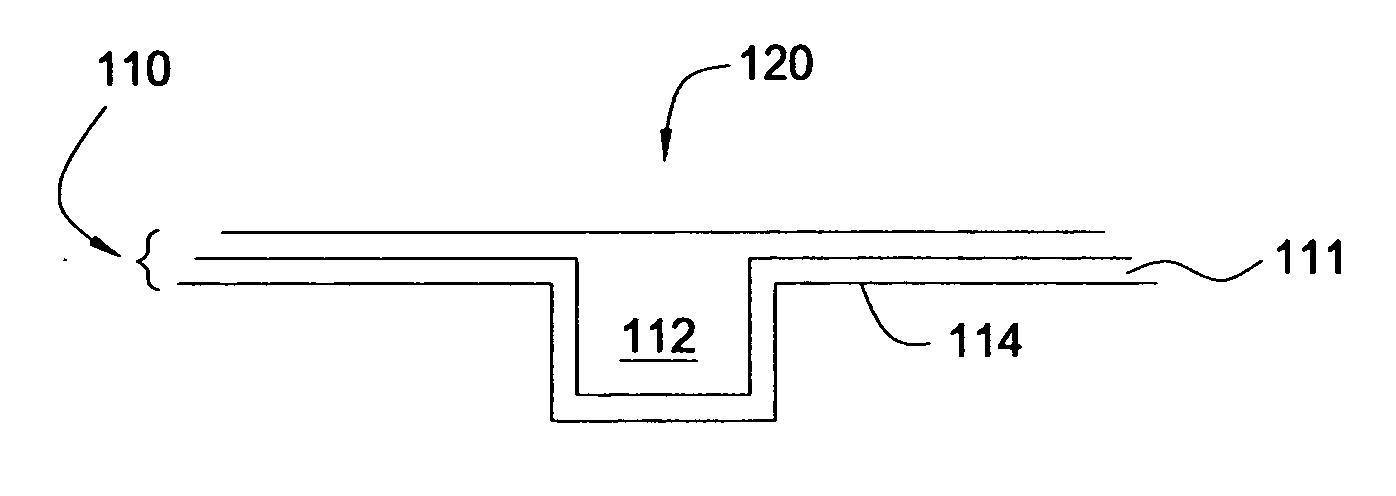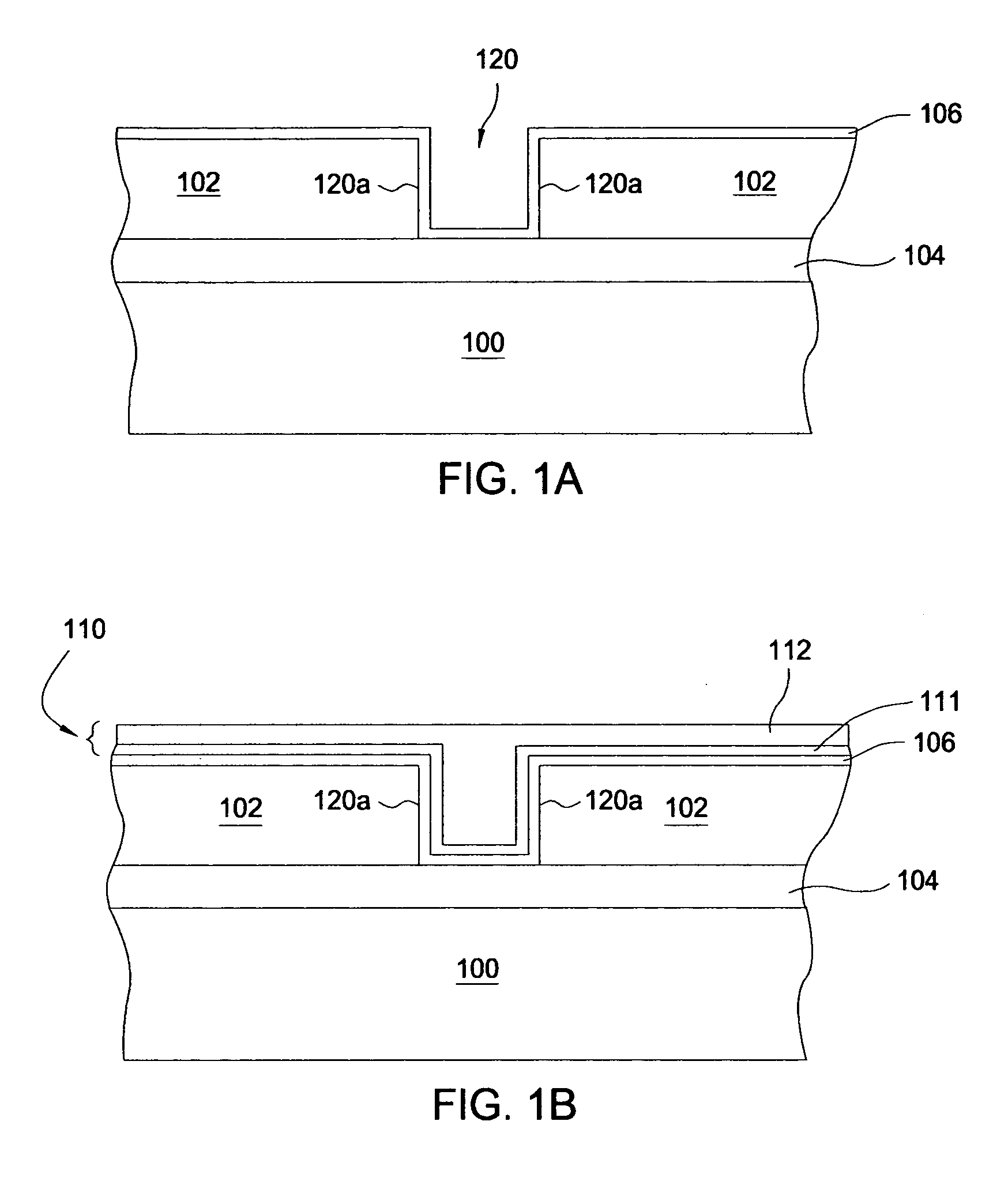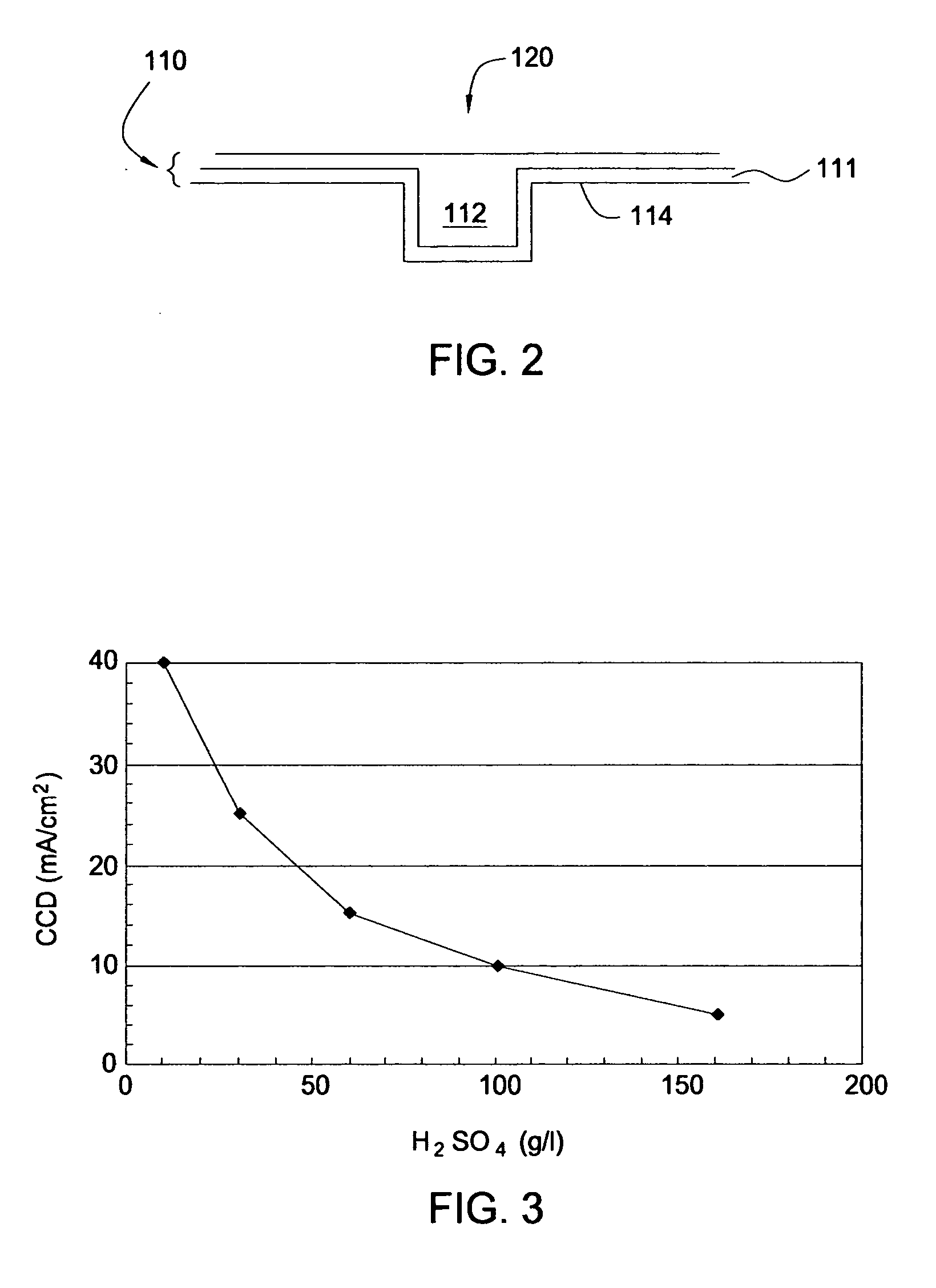Method of direct plating of copper on a ruthenium alloy
a technology of ruthenium alloy and copper, which is applied in the direction of electrical equipment, semiconductor devices, semiconductor/solid-state device details, etc., can solve the problems of insufficient seed step coverage of pvd techniques, inability to meet the demands of future interconnect technologies, and inability to fill voids of interconnect features via conventional metallization techniques. achieve the effect of reducing the critical current density and improving adhesion
- Summary
- Abstract
- Description
- Claims
- Application Information
AI Technical Summary
Benefits of technology
Problems solved by technology
Method used
Image
Examples
Embodiment Construction
[0023] The present invention teaches a method for depositing a copper layer onto a substrate surface, generally onto a barrier layer that is an alloy of a group VIII metal and a refractory metal. A cathodic electrochemical pre-treatment or a plasma treatment may be used to condition the surface of the barrier layer prior to plating a copper layer directly onto barrier layer. The copper layer may be plated on the barrier layer in an acidic electrolyte using a nucleation voltage pulse or in an alkaline bath containing a copper complexing agent.
[0024] Ruthenium thin films, deposited by CVD, ALD or PVD, are a potential candidate for an adhesion layer between intermetal dielectric (IMD) layers and copper interconnect layers for ≦45 nm technology. Ruthenium is a group VIII metal that has a relatively low electrical resistivity (resistivity ˜7 μΩ-cm) and high thermal stability (high melting point ˜2300° C.). It is relatively stable even in the presence of oxygen and water at ambient tempe...
PUM
| Property | Measurement | Unit |
|---|---|---|
| concentration | aaaaa | aaaaa |
| concentration | aaaaa | aaaaa |
| current density | aaaaa | aaaaa |
Abstract
Description
Claims
Application Information
 Login to View More
Login to View More - R&D
- Intellectual Property
- Life Sciences
- Materials
- Tech Scout
- Unparalleled Data Quality
- Higher Quality Content
- 60% Fewer Hallucinations
Browse by: Latest US Patents, China's latest patents, Technical Efficacy Thesaurus, Application Domain, Technology Topic, Popular Technical Reports.
© 2025 PatSnap. All rights reserved.Legal|Privacy policy|Modern Slavery Act Transparency Statement|Sitemap|About US| Contact US: help@patsnap.com



